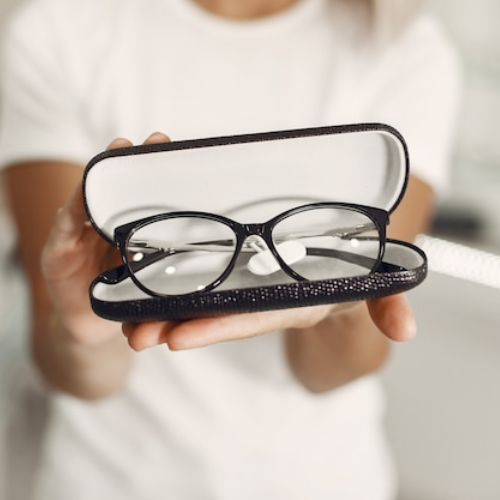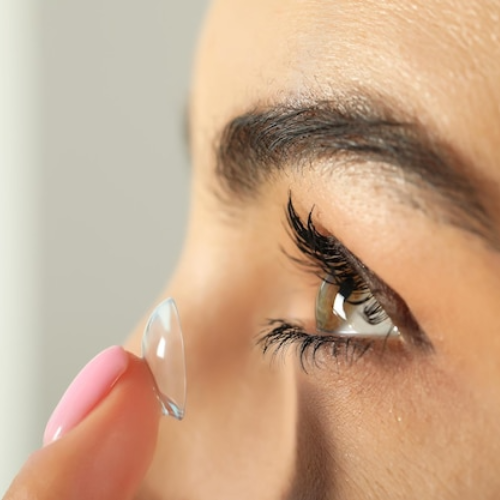
Refractive Correction in Lalbaug, Mumbai
Are you struggling with blurry vision or frequent headaches? It could be due to refractive errors. If you are looking for refractive correction in Lalbaug, Mumbai, you have come to the right place.
Dr. Tanvi Shah, a trusted ophthalmologist in Mumbai, has helped many patients restore their vision. Whether it is nearsightedness, farsightedness, or astigmatism, she offers advanced solutions to correct these issues. At Lalbaug Diagnostic Centre, we focus on your unique needs and ensure you receive the best care.
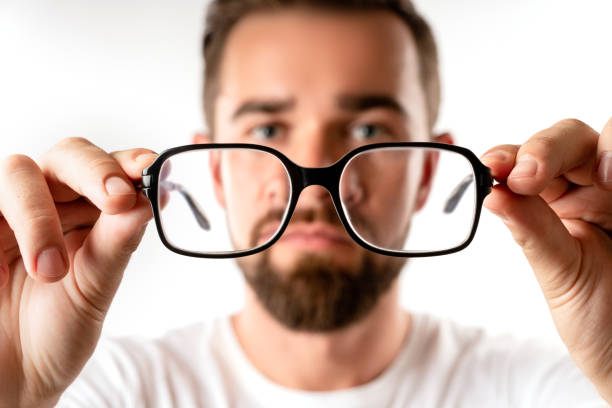
What Are Refractive Errors?
Ever wondered why your vision isn’t as sharp as it should be? Refractive errors occur when your eye is unable to properly focus light onto the retina. This happens when the eye’s shape, the curvature of the cornea, or the lens disrupts the correct entry of light into the eye.
As a result, objects may appear blurry, making it difficult to see clearly. If you are experiencing these issues, refractive correction can help restore your vision.

Now, let’s explore the different types of refractive errors.
Types of Refractive Errors and Their Symptoms
Here’s a quick overview of the most common refractive errors:
- Nearsightedness (Myopia): If you can see objects up close but struggle with distant ones, you may have myopia. Symptoms include squinting and eye strain when reading road signs or watching TV.
-
Farsightedness (Hypermetropia): If close-up tasks like reading are blurry, but you can see far away clearly, hypermetropia might be the cause. Symptoms may include headaches and difficulty focusing on nearby objects.
-
Astigmatism: This happens when the cornea has an irregular shape, leading to distorted or blurry vision at any distance. Symptoms include double vision and difficulty seeing clearly at night.
-
Presbyopia: As we get older, the lens in the eye becomes less flexible, making it harder to focus on objects that are close. If you are over 40 and struggle with reading or seeing up close, presbyopia could be the reason.
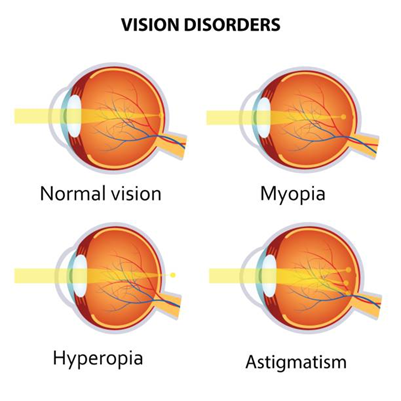
Treatment Options for Refractive Errors
Dr. Tanvi Shah, an expert in refractive correction in Mumbai, offers the best solutions, ensuring optimal results for her patients.
Non-Surgical Treatments
Surgical Treatments
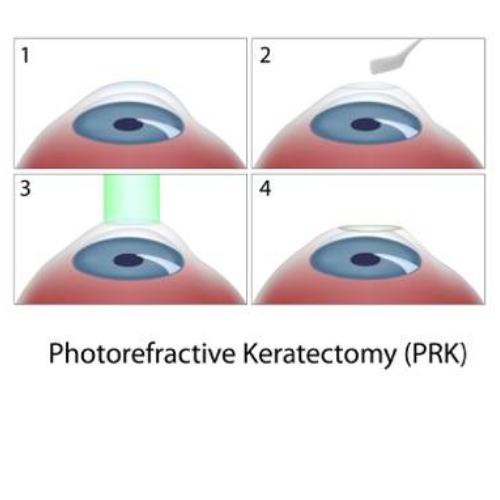
PRK (Photorefractive Keratectomy)
PRK is ideal for patients with a thin cornea. During this procedure, the cornea’s outer layer is removed, and a laser is used to reshape the underlying tissue. This treatment is effective for those with refractive errors, offering long-term correction without needing glasses or contact lenses.

LASIK (Blade)
LASIK (Laser-assisted in situ keratomileusis) is one of the most popular surgical methods for correcting refractive errors. It involves creating a flap in the cornea with a blade, which is then lifted to reshape the underlying corneal tissue with a laser. This procedure works well for patients with stable vision and can treat myopia, hypermetropia, and astigmatism.

Bladeless or Femto Lasik
In bladeless LASIK, also known as femtosecond LASIK, a laser creates the corneal flap instead of a blade. This method provides greater precision and is considered more comfortable for the patient. It offers the same benefits as the traditional LASIK procedure with added accuracy.

SMILE (Small Incision Lenticule Extraction)
SMILE is a newer, minimally invasive laser procedure for correcting refractive errors. It involves creating a small incision in the cornea to remove a lens-shaped piece of tissue. SMILE is known for its quick recovery time and precision, making it an excellent choice for patients seeking an advanced vision correction option.

ICL (Implantable Collamer Lens)
ICL involves inserting a synthetic lens inside the eye, in front of the natural lens, to correct vision. This is an excellent solution for patients unsuitable for LASIK due to thin corneas or high refractive errors. The procedure is highly effective and reversible, offering long-term vision correction without reshaping the cornea.
Let’s understand the process step by step.
What to Expect During Your Refractive Correction Procedure?
Here’s what you can expect:
Pre-procedure consultation: Dr. Tanvi Shah will conduct a thorough eye examination by dilating the eye to determine the best treatment for your refractive error. She will explain the procedure, answer your questions, and ensure you are fully prepared.
During the procedure: On the day of the surgery, you will be given numbing eye drops to ensure comfort. Depending on the chosen method (LASIK, PRK, SMILE, or ICL), the procedure will involve either reshaping the cornea with a laser or placing an implantable lens. The entire process usually takes less than 30 minutes.
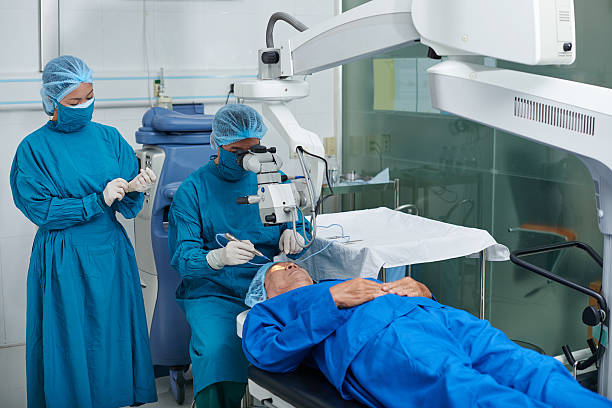
Post-procedure care: Dr. Shah will provide detailed instructions for post-operative care afterward. You might initially experience mild discomfort or blurry vision, but this improves within a few days. Follow-up visits will ensure your eyes are healing correctly.
Recovery period: Most patients notice improved vision within 24 to 48 hours, although complete recovery can take a few weeks. Dr. Shah will monitor your progress and make adjustments if necessary.
Recovery and Post-Treatment Care
After your refractive correction procedure, proper care is crucial for a smooth recovery.
Immediate post-procedure: Immediately after the surgery, you may experience mild discomfort, watering, or blurry vision. These symptoms generally subside within a few hours.
Follow-up appointments: Dr. Tanvi Shah will schedule follow-up visits to monitor your healing process and ensure your vision improves.
Eye protection: It is important to avoid rubbing your eyes and protect them from dust and bright light. Wearing sunglasses can help reduce light sensitivity.
Rest: For the first few days, avoid strenuous activities and screen time to give your eyes time to heal.
Medication and eye drops: You will be prescribed medicated eye drops to prevent infection and reduce inflammation. Follow the instructions carefully.
Long-term care: Regular eye check-ups are recommended to maintain eye health and monitor vision over time.
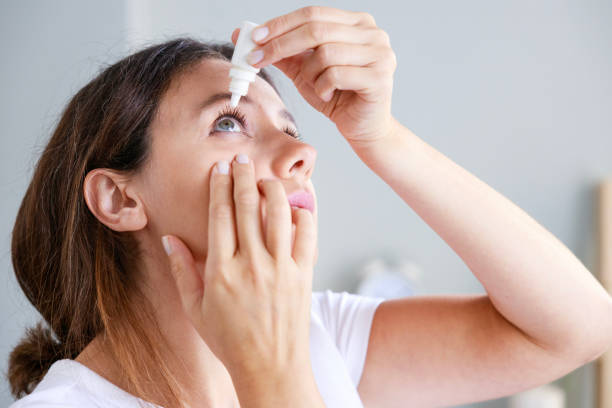
Moving forward, let’s learn about the advantages of this surgery.
Benefits of Refractive Correction Surgery
- Clear Vision: Achieve 20/20 vision or better, often without needing glasses or contacts.
- Fast Recovery: Return to daily activities within days.
- Lasting Results: Enjoy long-term vision improvement.
- Convenience: No more hassle with lenses or glasses.
- Better Quality of Life: Experience everyday tasks with clearer vision and greater confidence.
Wondering why Dr. Tanvi Shah is the best choice for your eye care? Here’s why.
Why Choose Dr. Tanvi Shah for Refractive Correction in Mumbai?
When it comes to your vision, trust matters. Dr. Tanvi Shah is a leading eye doctor in Mumbai with a reputation for excellence. Here’s why she’s the right choice for your surgery:
With over 50,000 satisfied patients, Dr. Tanvi Shah has built a reputation for providing exceptional care.
She has earned 3 gold medals for her expertise, reflecting her commitment to excellence in ophthalmology.
She uses advanced, precise treatment options to achieve optimal results for every patient.
Her clinic is equipped with cutting-edge technology, ensuring the highest standard of eye care.
Frequently Asked Questions
What is the best treatment for nearsightedness?
The best treatment for nearsightedness depends on your individual needs. Depending on your eye health and lifestyle, options include glasses, contact lenses, and surgical procedures like LASIK, SMILE, or ICL.
What is the cost of ICL eye surgery?
ICL surgery cost varies depending on the clinic, the type of lens used, and your unique requirements. Your doctor will provide an estimate during your consultation based on a thorough evaluation of your eyes.
Can both eyes be treated on the same day?
Yes, most refractive correction surgeries treat both eyes in the same session for convenience and quicker recovery.
Is LASIK surgery the best option for nearsightedness?
LASIK surgery for nearsightedness is a highly effective and popular choice, particularly for individuals with stable vision and a healthy cornea.
However, your doctor may recommend alternatives like SMILE or ICL based on your eye structure and health.
What is the cost of SMILE laser eye surgery?
The SMILE eye surgery cost varies depending on the clinic, technology, and your case. It is best to consult an eye surgeon for a personalized quote and an accurate assessment of your needs.
What are implantable contacts?
Implantable contacts (ICL) are lenses surgically placed inside the eye to correct vision. They offer a permanent solution for refractive errors and are ideal for those who can’t undergo LASIK.
Disclaimer: The information shared in this content is for educational purposes only and not for promotional use.

